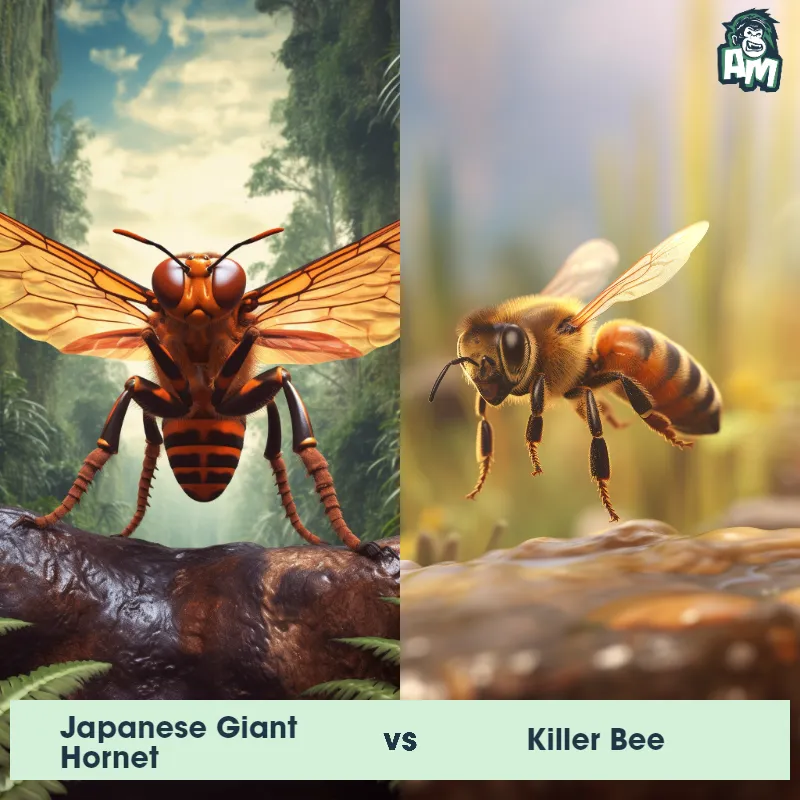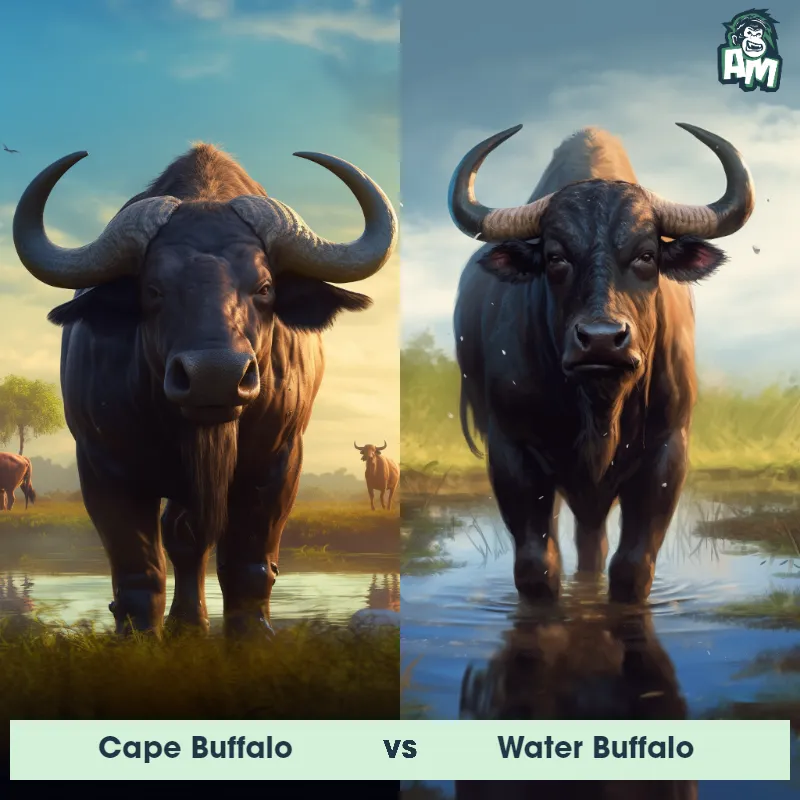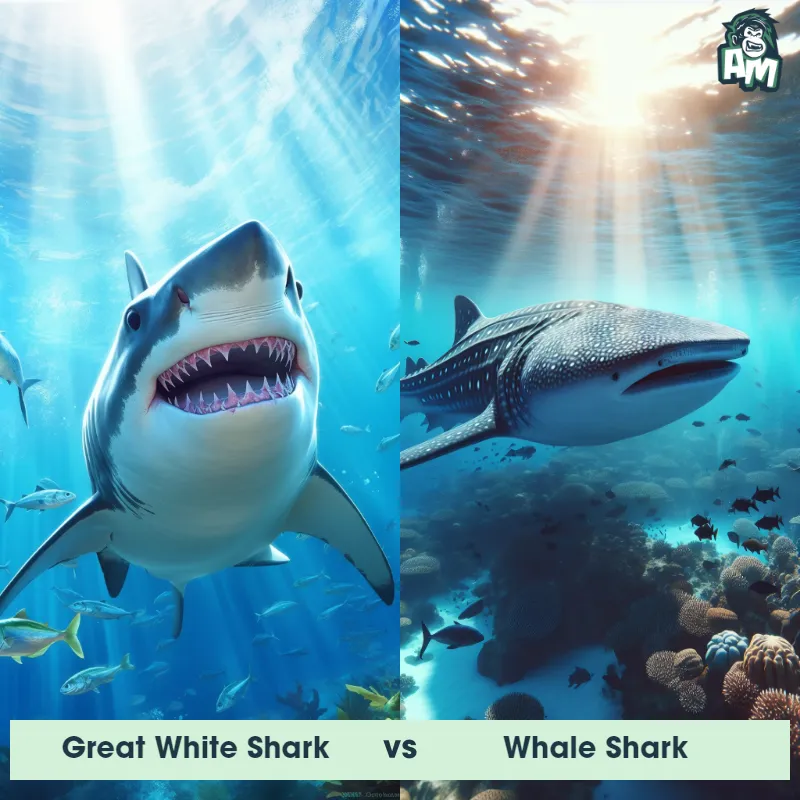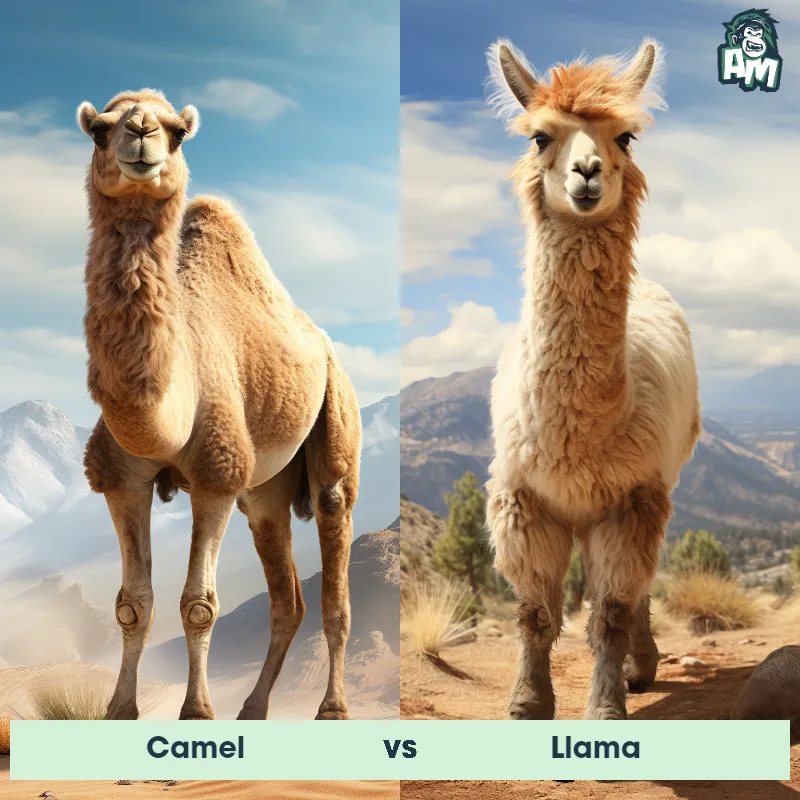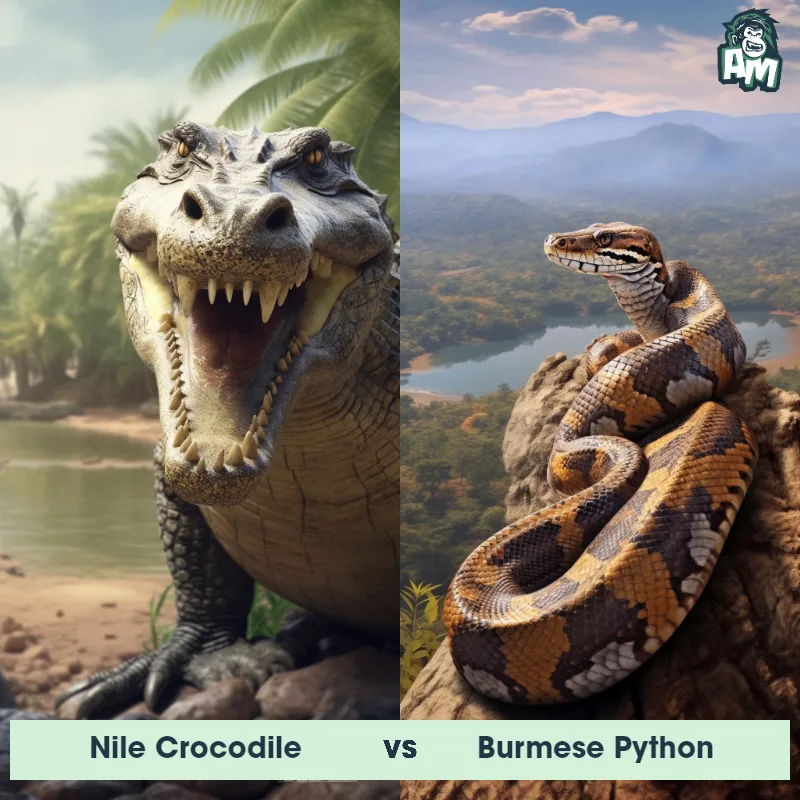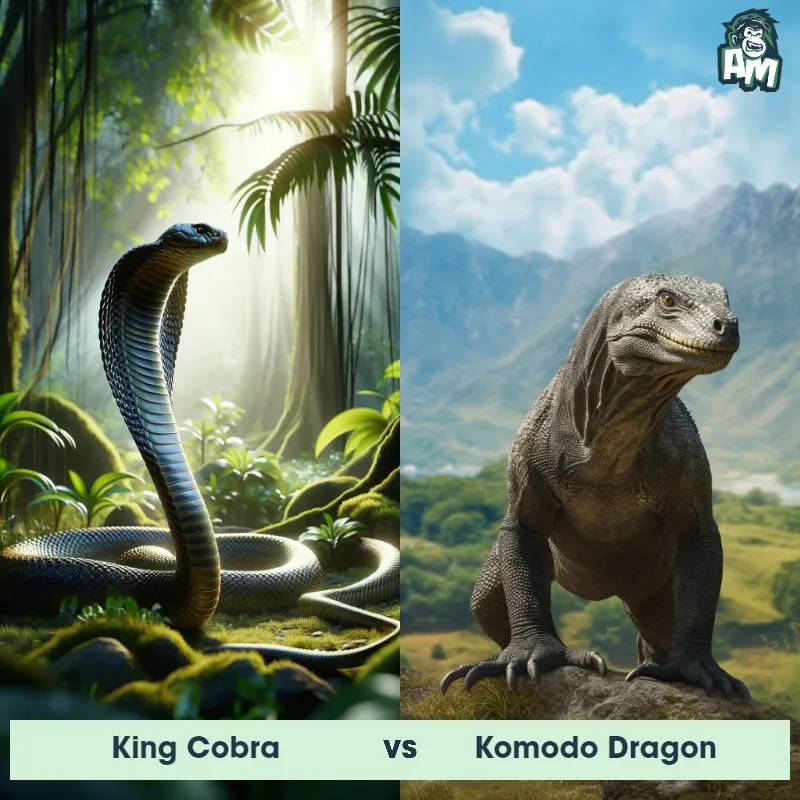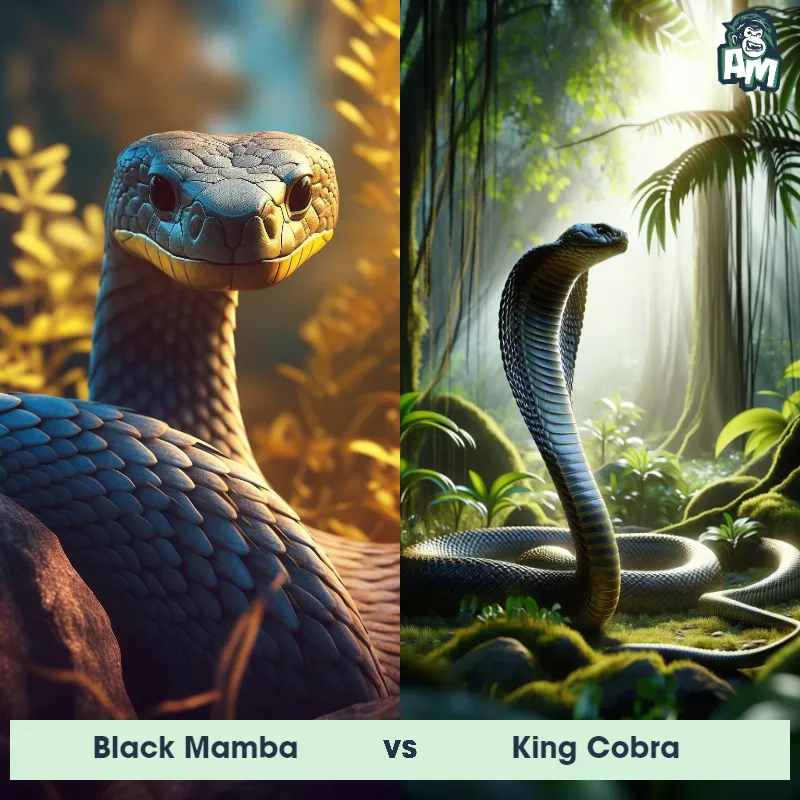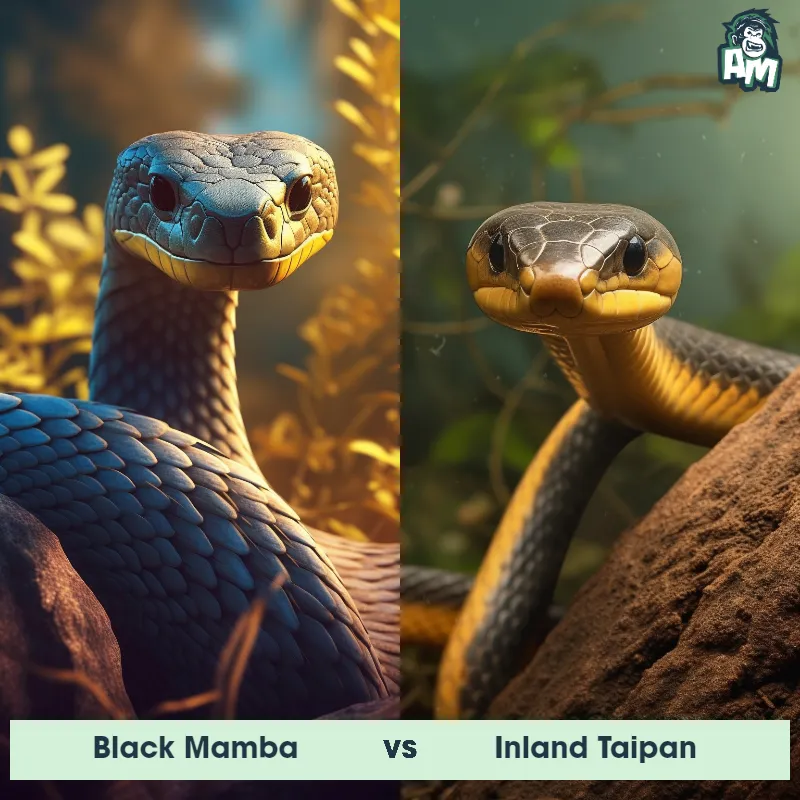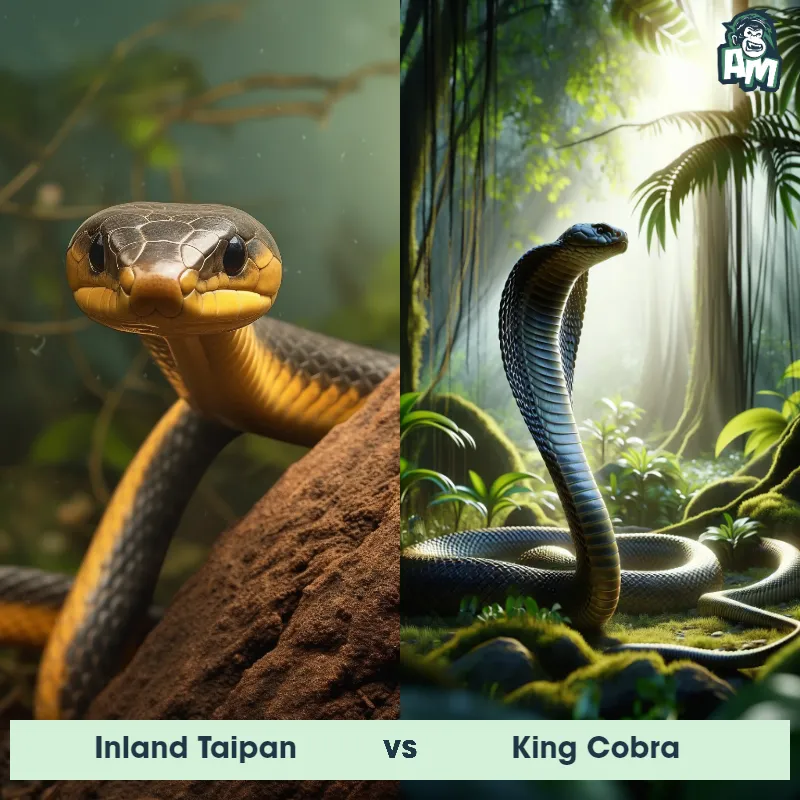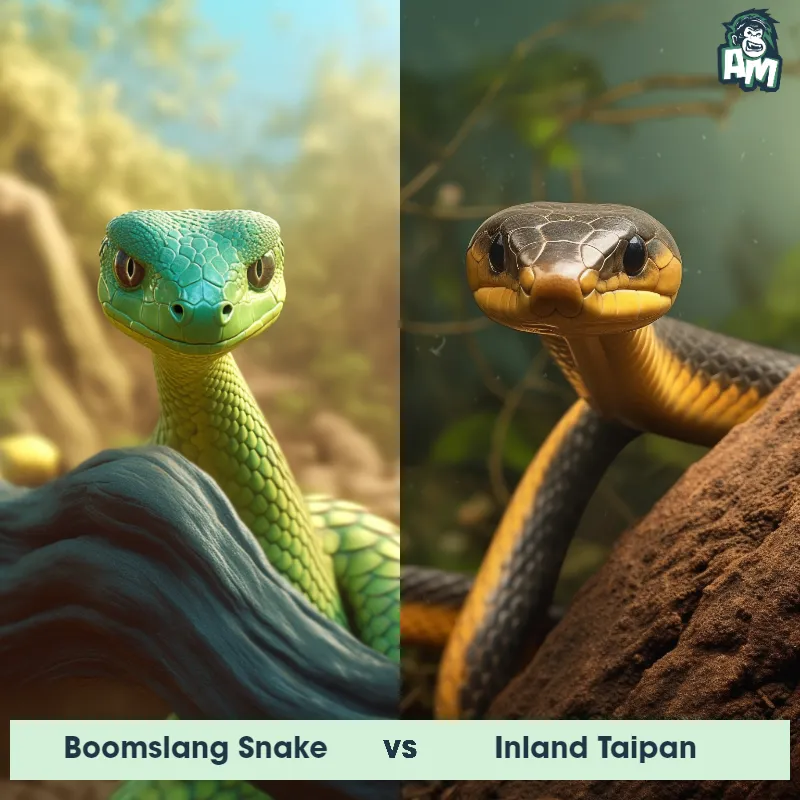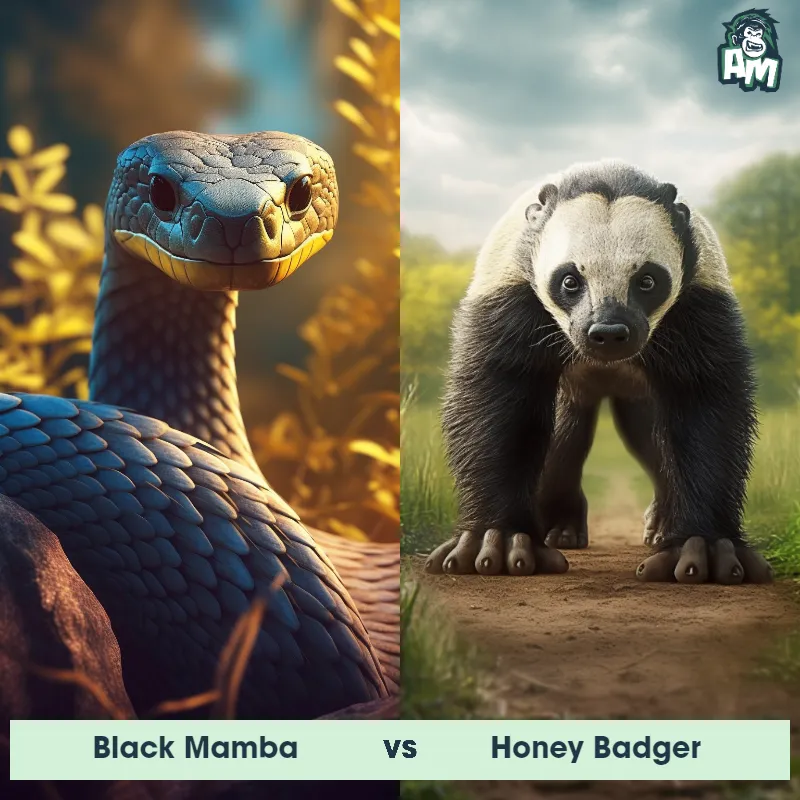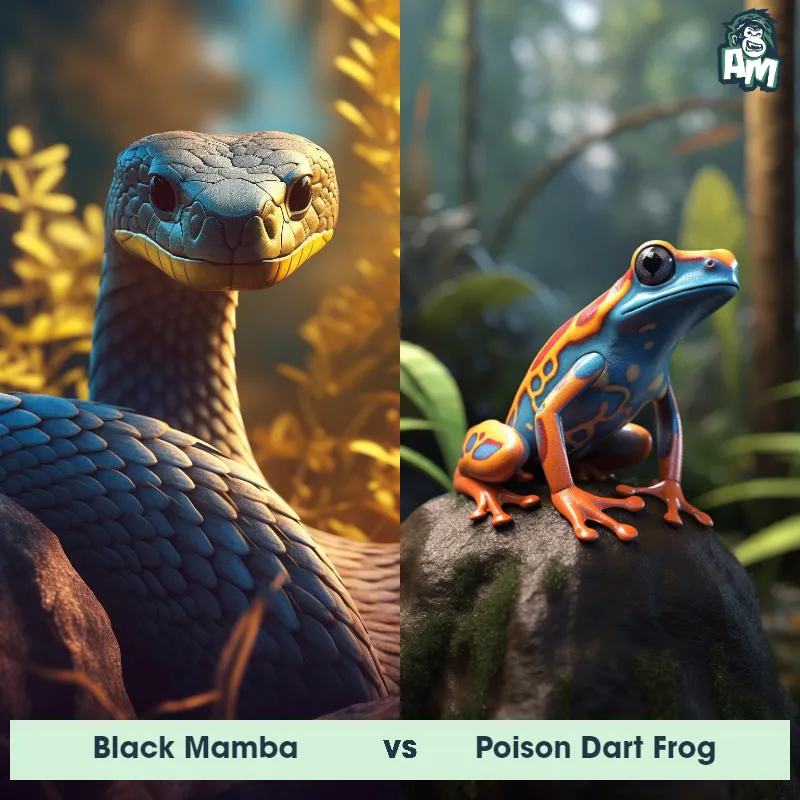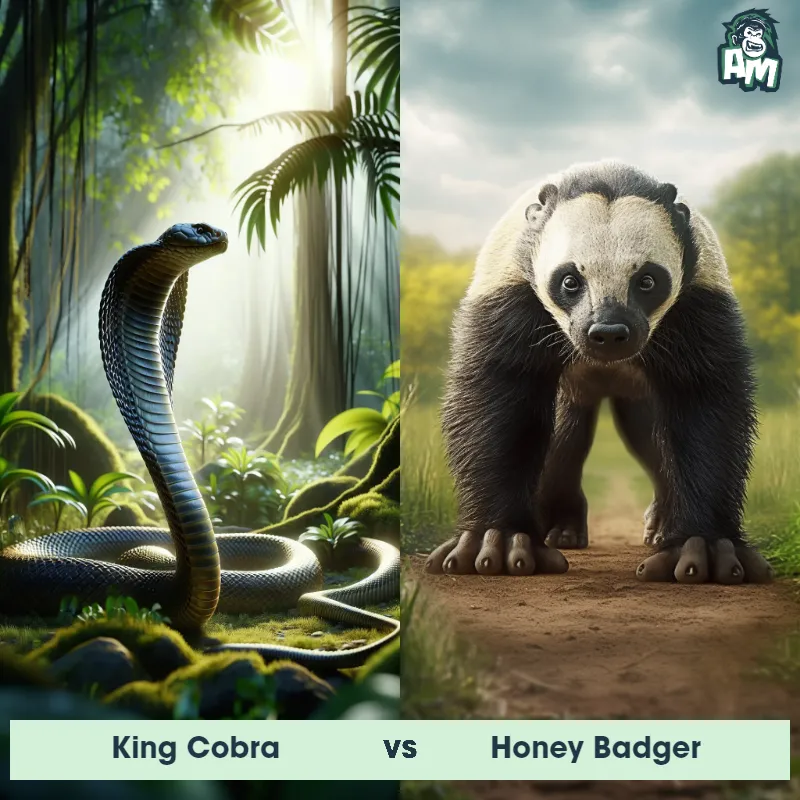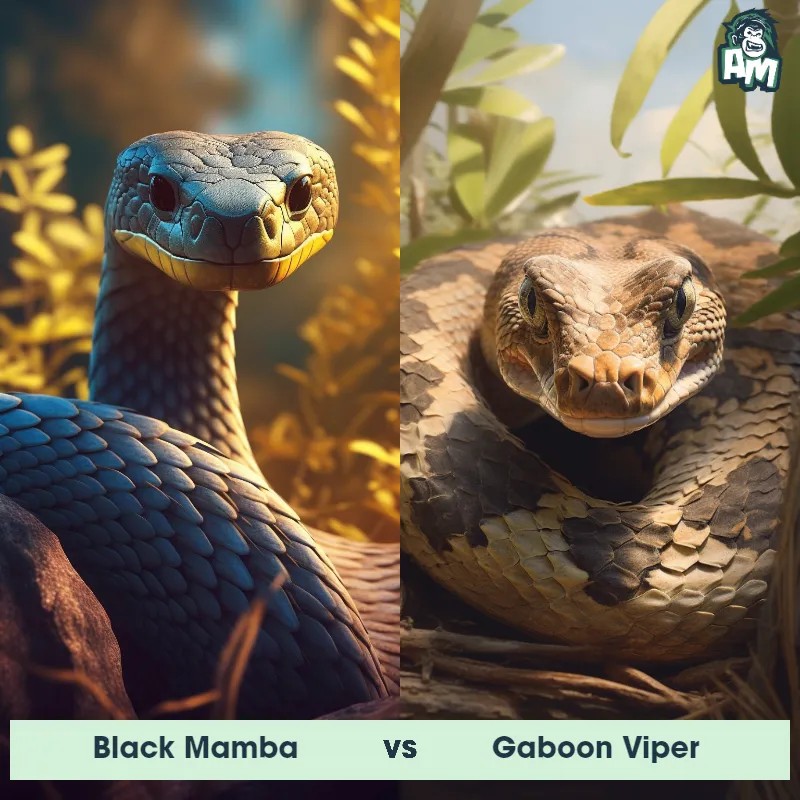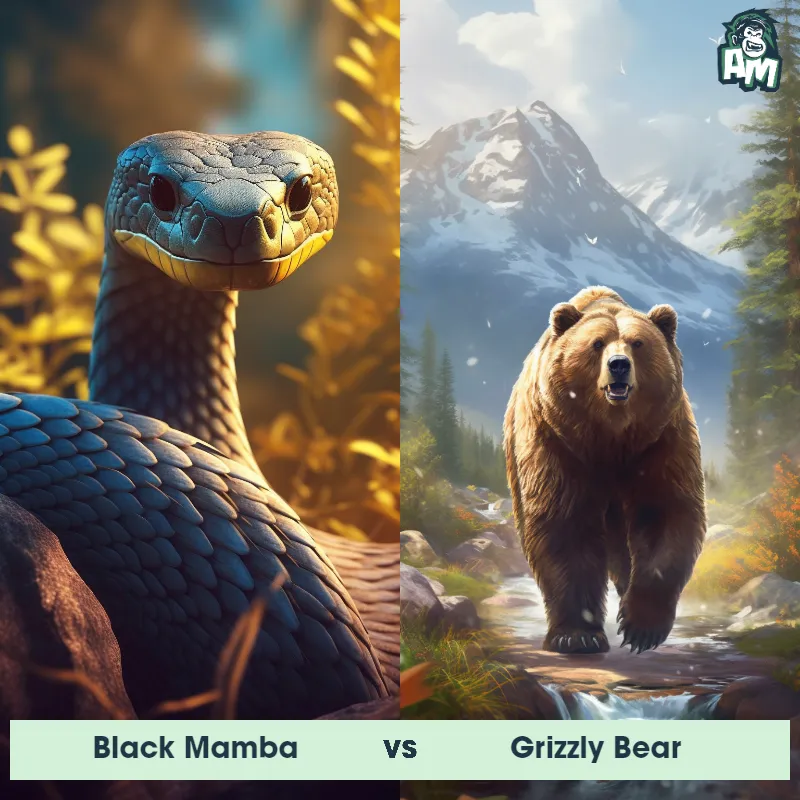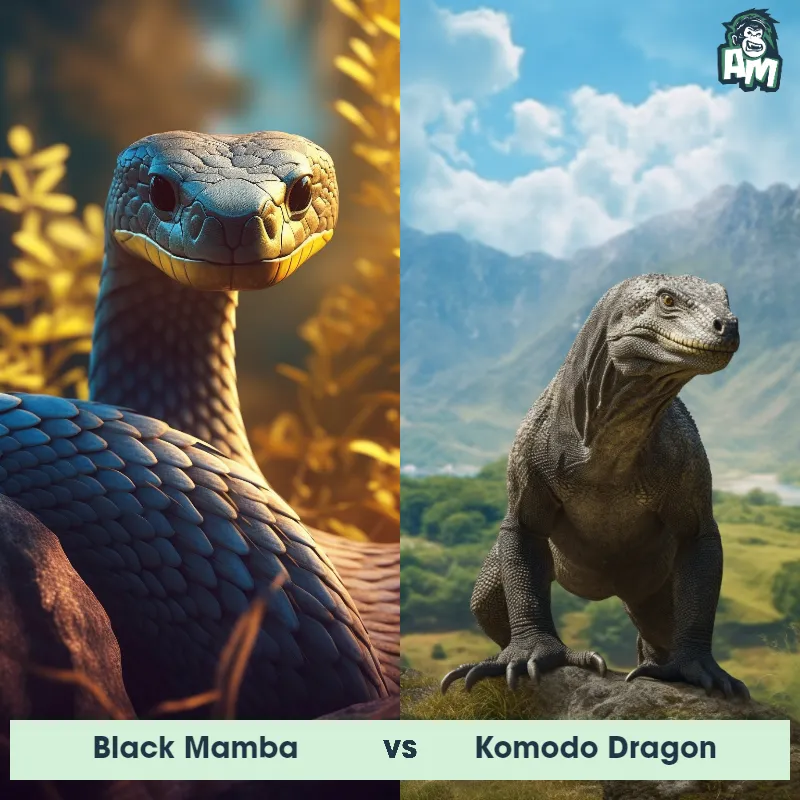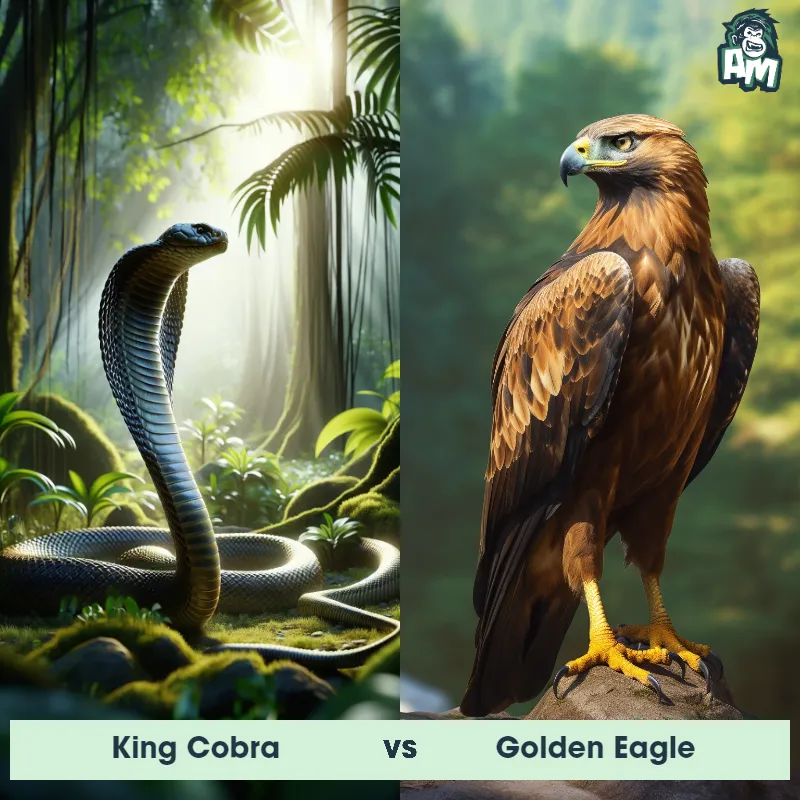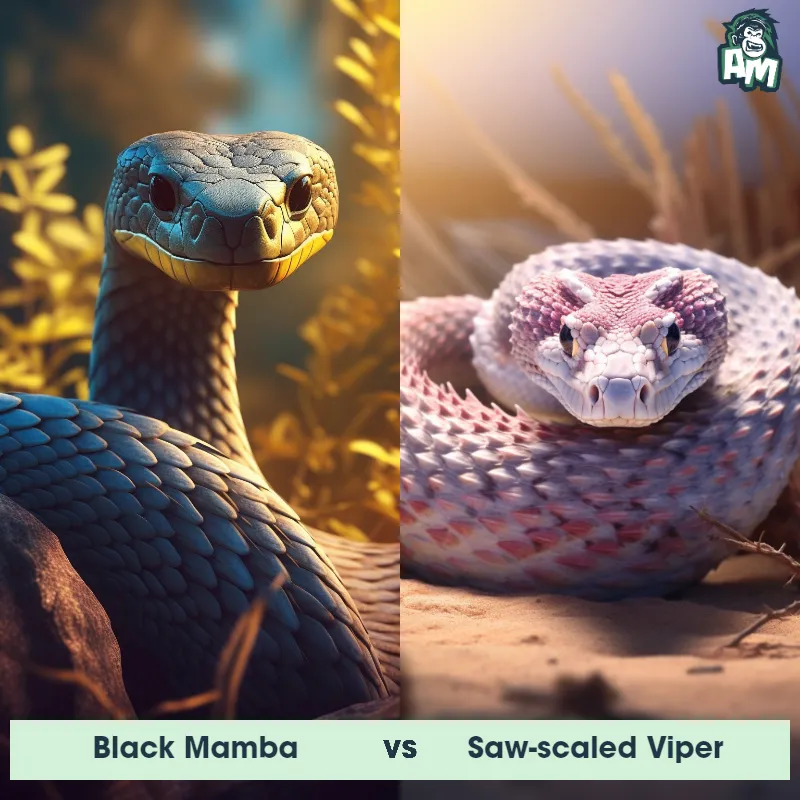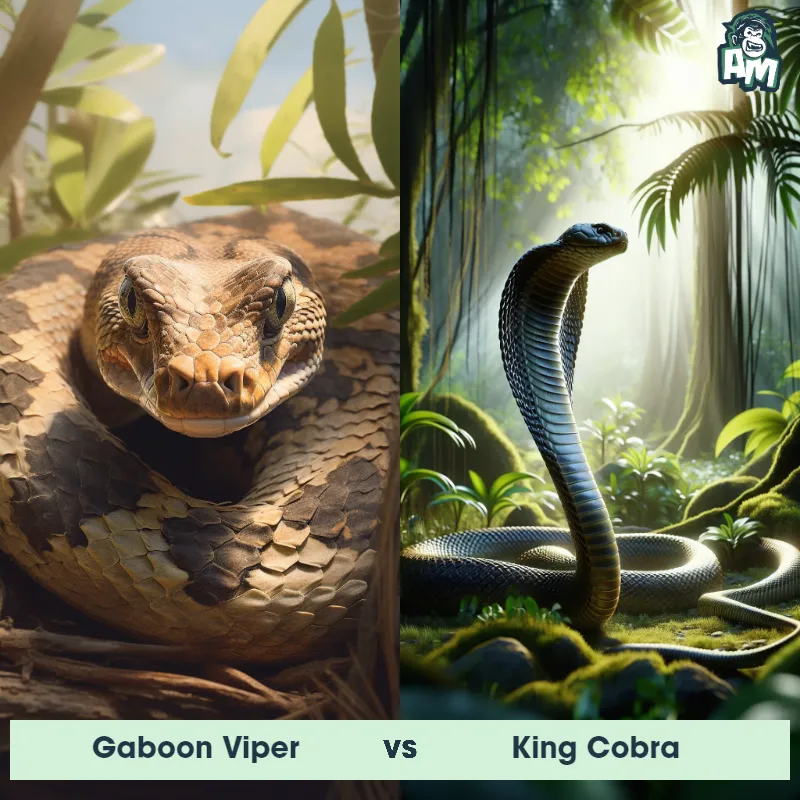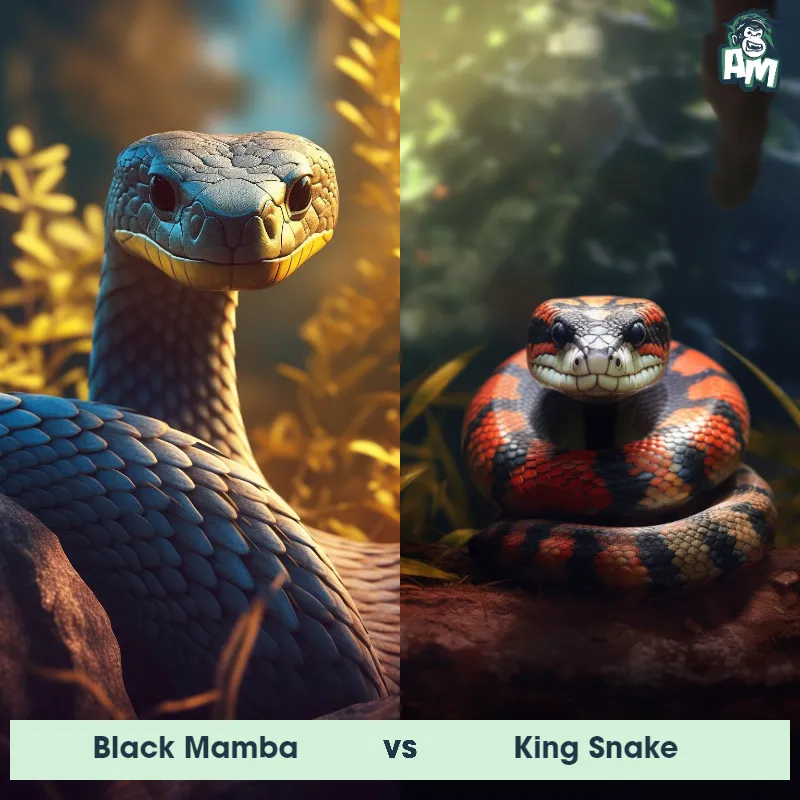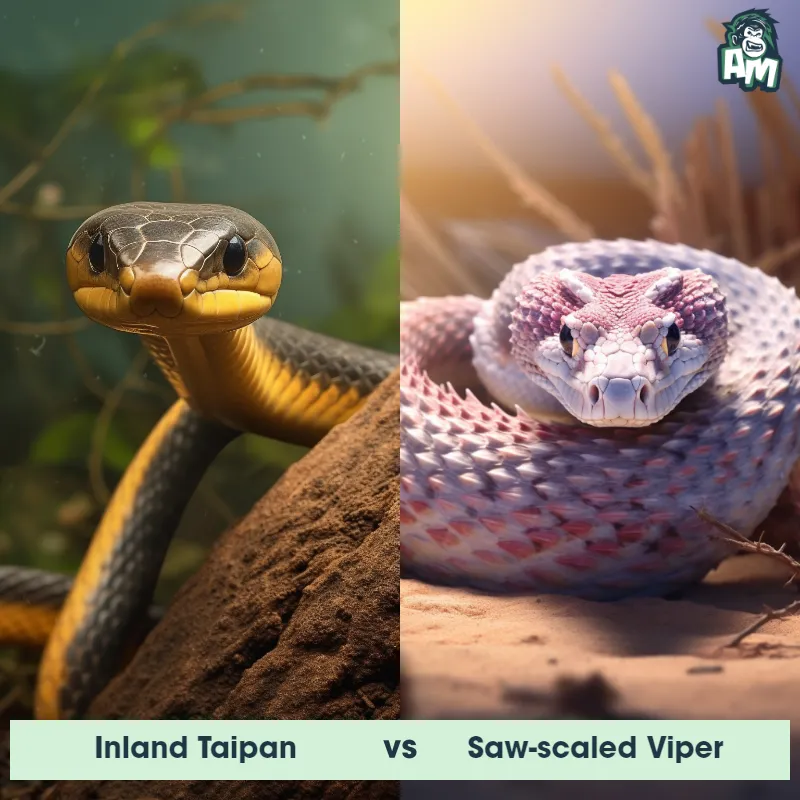King Snake vs Coral SnakeSee Who Wins

Ladies and gentlemen, welcome to this fierce showdown between two dangerous serpents in the wild! We find ourselves in the heart of nature, where the unpredictable unfolds. Without further ado, let's witness the battle between the King Snake and the Coral Snake!
Contender 1: King Snake
The King Snake, also known as the Lampropeltis, is a non-venomous snake that can be found in North and Central America. They are known for their distinctive color patterns, which can vary depending on the species. Some King Snakes have black and white stripes, while others have red and black bands. They are constrictors, meaning they kill their prey by squeezing them until they suffocate. King Snakes are also known for their immunity to the venom of other snakes, which allows them to eat venomous snakes without being harmed.
Fun Fact: King Snakes are known for their ability to mimic the appearance and behavior of venomous snakes, such as the Coral Snake. This is a defense mechanism that helps them avoid predators.
Contender 2: Coral Snake
The Coral Snake, also known as Micrurus fulvius, is a venomous snake species found in North America. It has a distinctive color pattern with bright red, yellow, and black bands that encircle its body. Unlike many other North American snakes, the Coral Snake has a small head, black eyes, and a short tail. This serpent species ranges in size from 2 to 4 feet long, and it has smooth scales. Coral Snakes are known for their secretive nature, spending most of their time hidden in leaf litter or underground burrows.
Fun Fact: A fascinating fact about the Coral Snake is that it is part of the Elapidae family, which also includes cobras and mambas, making it one of the only venomous snakes in North America that is not part of the Viperidae family.
Matchup Stats
| King Snake | Coral Snake | |
|---|---|---|
| Size | Up to 6 feet (1.8 meters) | 2 to 4 feet long (0.6 to 1.2 meters) |
| Weight | Up to 4 pounds (1.8 kilograms) | Not specified |
| Speed | Speed: 4 mph (6.4 km/hr) | 1mph (1.6km/h) |
| Key Strength | Constriction | Not specified |
| Biggest Weakness | None | Not specified |
Current Votes
King Snake vs Coral Snake
See Who Wins
View More Matches
Looking For More?
Similar Matches
Scientific Stats
| King Snake | Coral Snake | |
|---|---|---|
| Scientific Name | Lampropeltis | Micrurus fulvius |
| Family | Colubridae | Elapidae |
| Habitat | Terrestrial | Leaf litter, underground burrows |
| Geography | North and Central America | North America |
| Diet | Carnivorous, eats rodents, lizards, birds, and other snakes | Small reptiles, snakes, and other snakes' eggs |
| Lifespan | 15 years - 25 years | 6 years - 8 years |
Key Differences between King Snake and Coral Snake
- Color: The King snake has a pattern of thick black bands with white or yellow bands, while the Coral snake displays thin red and yellow bands separated by black bands.
- Size: King snakes generally grow larger in size, ranging from 3 to 6 feet long, whereas Coral snakes tend to be smaller, averaging around 2 to 4 feet in length.
- Snout color: The King snake typically has a white or yellow snout, while the Coral snake presents a distinctive black snout.
- Band order: The King snake shows bands of alternating color order, with black bands sandwiched between groups of white or yellow bands, whereas the Coral snake exhibits a specific pattern of red bands touching yellow bands, which are then separated by black bands.
- Head shape: The King snake possesses a slightly broader head in comparison to the Coral snake, which has a more slender and pointed head.
- Pupil shape: The King snake has round pupils similar to humans, whereas the Coral snake has round pupils bordered by a characteristic semi-circular black ring.




